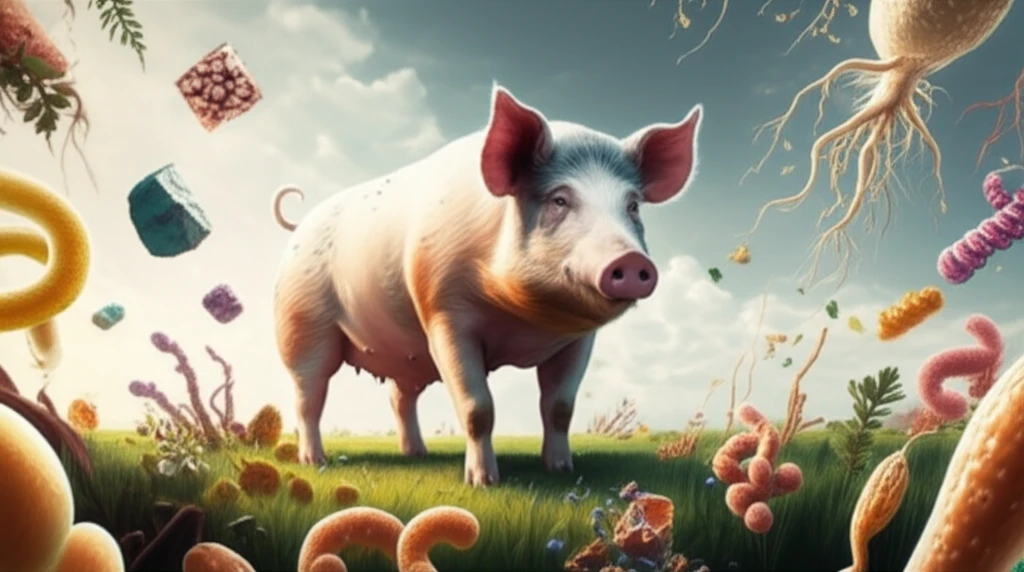
Beyond Antibiotics: How Natural Feed Additives & Outdoor Access Can Boost Pig Health
"Discover the potential of mannan oligosaccharides (Bio-Mos) and outdoor housing to improve pig growth and well-being, offering a promising alternative to traditional antibiotic use in livestock farming."
In an era where concerns about antibiotic resistance are escalating, the livestock industry is under increasing pressure to find alternative strategies for promoting animal health and growth. Traditional reliance on antibiotics as growth promoters is being questioned, leading researchers and farmers to explore innovative solutions that prioritize both animal welfare and sustainable practices. This article delves into a compelling study that investigates the potential of mannan oligosaccharides (Bio-Mos) and outdoor access housing systems to enhance pig health, growth, and overall carcass composition.
The study, conducted by researchers at The Ohio State University, examines the effectiveness of Bio-Mos, a prebiotic, in comparison to subtherapeutic antibiotic treatments and conventional housing systems. The core objective is to identify viable alternatives to antibiotics that not only maintain but also improve pig performance and health. This research is particularly relevant as legislative bans on antibiotic use in livestock gain traction globally, pushing the industry towards more sustainable and health-conscious farming methods.
This comprehensive analysis not only sheds light on the immediate benefits of these alternative approaches but also addresses broader implications for the future of swine farming. By understanding the interplay between natural feed additives, housing conditions, and pig physiology, we can pave the way for more responsible and effective strategies in livestock management.
Unpacking the Science: Bio-Mos and Outdoor Housing

The research design was structured as a 3 × 2 factorial experiment, involving 360 pigs from a Landrace breeding female population. The pigs were divided into groups receiving one of three dietary treatments: a control diet, a diet supplemented with Bio-Mos, or a diet including a subtherapeutic antibiotic (tetracycline). The Bio-Mos was administered at varying inclusion rates across different growth phases, ensuring a targeted approach to nutritional support.
- Bio-Mos (BM): A prebiotic that supports gut health.
- Antibiotic (AB): Tetracycline, included at 0.0055% in all dietary phases.
- Control (CON): A standard diet without additives.
- Indoor (IN): Conventional, indoor facility with limited space per pig.
- Outdoor Access (OUT): More space per pig with bedded concrete and outdoor area.
Moving Forward: Towards Sustainable Swine Farming
The insights gained from this study offer a promising outlook for the future of swine farming. By integrating natural feed additives like Bio-Mos and optimizing housing conditions to include outdoor access, the industry can move towards more sustainable and responsible practices. These changes can not only reduce our reliance on antibiotics but also promote better animal welfare and improve overall production efficiency. As consumer awareness and regulatory pressures continue to grow, adopting these innovative approaches will be crucial for ensuring the long-term viability and ethical integrity of the swine farming industry.
